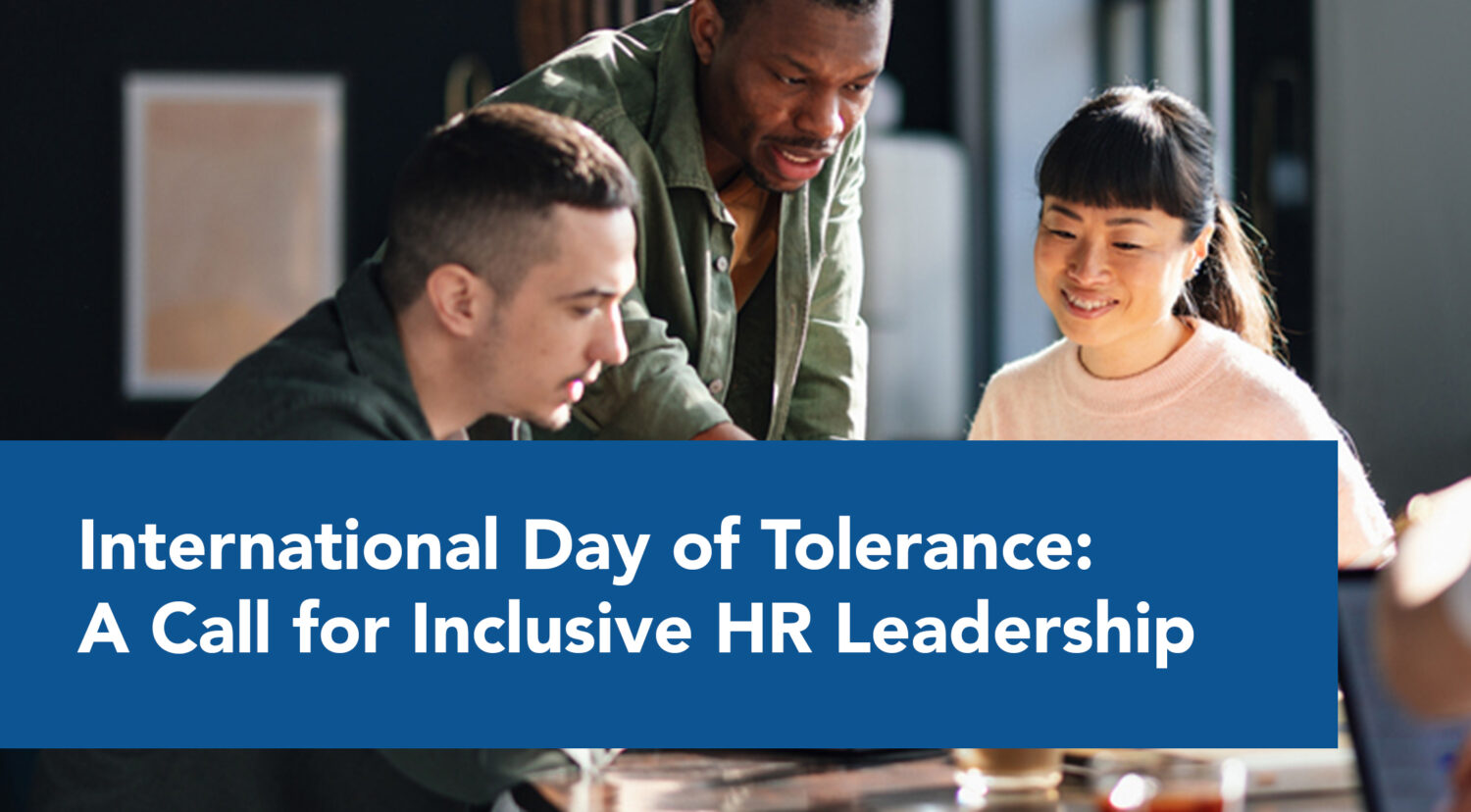

Hello my dear HR professionals,
We know that fostering a diverse, inclusive, and respectful workplace isn’t just a box to check. It’s a continual commitment that requires thoughtful action and leadership. Last Saturday was International Day of Tolerance, a perfect time to pause and reflect on how we’re doing in promoting these values—and how we can do even better.
The International Day of Tolerance, observed every November 16, is a day to honor the importance of tolerance in society. But for us in HR, it’s also a reminder of our roles as the stewards of workplace culture, where tolerance should be more than just a concept; it should be something that’s embedded into everything we do. This isn’t just about being kind to one another—it’s about creating an environment where everyone, regardless of their background, feels welcomed, valued, and heard.
So, why is this so important in HR?
Tolerance and Compliance: Where the OFCCP and Affirmative Action Plans Come In
If you’re a federal contractor, you’re probably familiar with the Office of Federal Contract Compliance Programs (OFCCP), which enforces regulations that require federal contractors to maintain affirmative action programs. But beyond HR compliance, there’s a deeper message here. The purpose of affirmative action policies isn’t just about meeting legal requirements; it’s about making sure that opportunities are equitable and accessible to all. It’s about ensuring that workplace discrimination, whether direct or unconscious, has no place in the hiring process or the workplace culture.
Workplace diversity aligns perfectly with the values of tolerance. An affirmative action plan isn’t simply about numbers or quotas—it’s about recognizing the value that diverse perspectives and experiences bring to the table. When we embrace diversity, we’re not only complying with regulations, but we’re also creating a workplace that’s stronger, more innovative, and more dynamic. Tolerance, then, becomes not just a legal obligation, but a core value that drives business success.
What Does Tolerance Look Like in Action?
- Inclusive Hiring Practices: First, let’s address recruitment. Tolerance begins with a hiring process that is fair, unbiased, and welcoming to all. Ensure your hiring managers are trained to recognize unconscious biases and have clear, structured guidelines to ensure every candidate is evaluated based on their abilities and qualifications—not on stereotypes or assumptions.
- Affirmative Action Plans (AAP): AAPs are crucial for federal contractors, but they’re also important for ANY organization looking to foster a culture of tolerance. These plans should not only meet compliance standards but also reflect a commitment to creating an inclusive workplace. Regularly review your AAPs to ensure they’re up-to-date, comprehensive, and, most importantly, being actively implemented.
- Employee Training: Tolerance isn’t something that happens overnight. It requires ongoing education and engagement. Providing training around cultural competency, anti-harassment policies, and inclusivity can help employees understand the importance of respecting one another’s differences. Remember, the goal is to create a space where employees feel safe speaking up and addressing issues related to discrimination and harassment without fear of retaliation.
- Promote Respectful Communication: As HR professionals, we can set the tone for how communication happens within the organization. Encourage transparency, respectful discourse, and open dialogue, especially when it comes to sensitive topics. When we foster respectful communication, we’re helping create an environment where tolerance isn’t just a policy—it’s a lived experience.
How Leaders in HR Can Lead the Way
You have the power to drive this change. Here are a few ideas to help you champion tolerance in your organization:
- Lead by Example: Tolerance starts at the top. If leaders in your organization demonstrate inclusivity and respect in their everyday actions, employees will follow suit. Make it clear that tolerance is an expectation, not an option.
- Measure and Report Progress: Ensure that your diversity and inclusion initiatives are not just a set of aspirational goals. Measure your progress and report it to leadership. Transparency is key when it comes to accountability.
- Create Safe Spaces: Offer platforms for employees to share their thoughts and concerns. Whether it’s through open forums, anonymous surveys, or one-on-one check-ins, giving employees the chance to be heard is a powerful way to promote tolerance in the workplace.
- Collaborate with Others: Tolerance isn’t something you can promote in isolation. Connect with other HR leaders, learn from each other’s successes and failures, and stay up-to-date on best practices. Collaboration makes us all stronger.
In Conclusion
International Day of Tolerance is an important reminder that as HR professionals, we have a responsibility to create workplaces where everyone feels respected, valued, and included. By adhering to the principles of tolerance, embracing diversity through affirmative action plans, and fostering a culture of inclusion, we can build workplaces where people from all walks of life can thrive.
Let’s use this day to reflect on how far we’ve come—and how far we still have to go to create the truly inclusive workplaces we all strive for. It’s not just about compliance; it’s about setting the foundation for success, respect, and collaboration.
Let’s keep pushing the envelope on inclusion, one policy at a time.
HR Unlimited, Inc. specializes in helping federal contractors and employers effectively meet their AAP and EEO compliance obligations. Please contact us to discuss any of your questions, concerns, or needs in this area.





